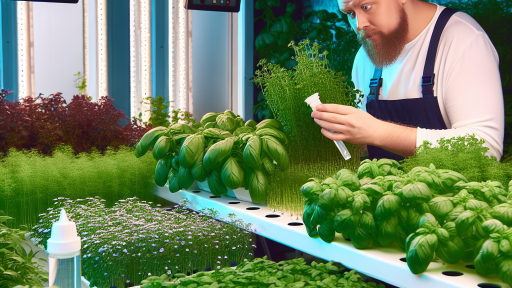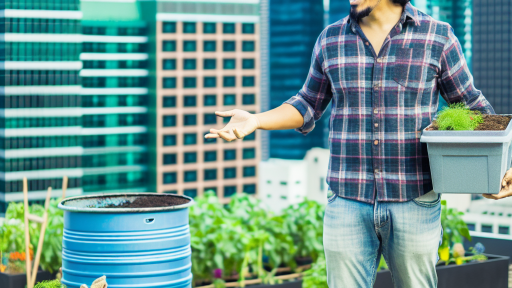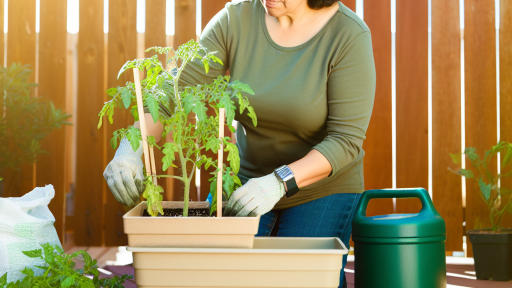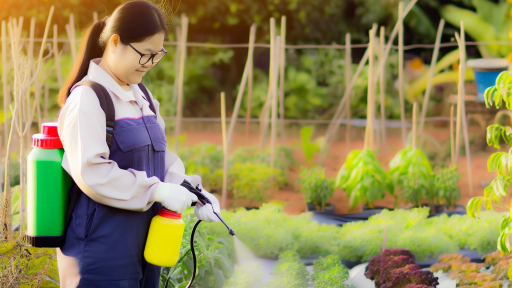Choosing the Right Containers: Materials and Sizes
Understanding Container Materials
Selecting the right material is crucial for container gardening.
Plastic containers are lightweight and affordable.
They come in various colors and shapes, offering flexibility.
However, they may retain heat, affecting roots.
Clay pots provide excellent breathability for plants.
They also maintain moisture levels, preventing overwatering.
On the downside, clay pots can be heavy and break easily.
Wood containers offer a rustic look and natural insulation.
Ensure the wood is untreated to avoid leaching chemicals.
Metal containers can add a modern touch to your garden.
Be cautious, as they heat up quickly in the sun.
Choosing the Right Sizes
Container size impacts plant growth significantly.
Smaller containers are suitable for herbs and compact plants.
They allow for easy mobility within urban spaces.
Larger containers are essential for bigger plants like tomatoes.
Transform Your Agribusiness
Unlock your farm's potential with expert advice tailored to your needs. Get actionable steps that drive real results.
Get StartedThese containers provide more soil volume and nutrients.
Additionally, consider the depth of the container.
Deep containers are ideal for root vegetables such as carrots.
Shallow pots work well for leafy greens and annual flowers.
Managing Drainage and Soil
Ensure proper drainage in all containers to prevent root rot.
Look for pots with drainage holes at the bottom.
You can also add a layer of gravel to enhance drainage.
Use a high-quality potting mix to maintain healthy growth.
Consider soil blends designed specifically for container gardening.
This will improve moisture retention and aeration for roots.
Arranging Containers for Maximum Benefit
Group containers together for a cohesive look.
This creates a microclimate, helping plants thrive.
Additionally, consider the sunlight needs of each plant.
Position taller plants to the north to avoid shading others.
Vary the heights and sizes of containers for visual interest.
This adds texture and depth to your urban garden.
Best Soil Mixes for Container Gardening
Importance of Proper Soil
Soil quality directly impacts plant growth and health.
In container gardening, the right soil mix provides essential nutrients.
Moreover, it enhances drainage and aeration.
Thus, choosing the best soil mix is vital for urban farmers.
Components of an Ideal Soil Mix
An effective soil mix includes several key components.
- Potting soil serves as the base ingredient.
- Organic matter improves soil fertility.
- Pearlite or vermiculite enhances drainage.
- Compost enriches the mix with nutrients.
- Sand increases aeration and moisture retention.
Popular Soil Mix Recipes
Many gardeners opt for specific soil mix recipes.
The following blends can support diverse plant types:
- A basic mix includes two parts potting soil and one part compost.
- A succulent mix combines equal parts potting soil and sand.
- A herb mix features three parts potting soil, one part compost, and one part perlite.
- A vegetable mix often contains two parts potting soil, one part compost, and one part peat moss.
Commercial Soil Mix Options
If you prefer convenience, consider commercial soil mixes.
Showcase Your Farming Business
Publish your professional farming services profile on our blog for a one-time fee of $200 and reach a dedicated audience of farmers and agribusiness owners.
Publish Your ProfileSeveral brands offer ready-to-use options specifically for container gardening.
Seek out mixes labeled for specific plants or purposes.
- Gardener’s Supply Company provides organic potting soil for herbs and vegetables.
- Miracle-Gro offers a potting mix designed to retain moisture.
- FoxFarm specializes in premium organic soil blends for various plants.
Customizing Your Soil Mix
Urban farmers can customize their soil mixes to fit unique needs.
Consider factors like climate, plant type, and container size.
For instance, adding more sand benefits plants in humid areas.
Alternatively, boosting organic matter supports heavier feeders.
Experimentation leads to the ideal soil mix for your garden.
Watering Techniques for Urban Container Gardens
Understanding Container Water Needs
Container gardens often require more frequent watering than in-ground gardens.
This increased need stems from limited soil volume.
Moreover, containers can dry out quickly due to heat exposure.
Regular observation of your plants helps identify their specific watering needs.
Choosing the Right Watering Technique
Various watering techniques ensure your plants thrive.
Drip irrigation systems deliver water directly to the soil.
These systems minimize water waste and reduce evaporation.
Additionally, a watering can allows for precise control of water distribution.
While hoses with a spray nozzle offer convenience for larger areas.
Best Time to Water
Timing plays a crucial role in effective watering.
Morning is the best time to water your container plants.
This timing allows water to penetrate the soil before the sun’s heat peaks.
Evening watering can lead to excess moisture overnight, fostering rot.
Monitoring Soil Moisture
Checking soil moisture ensures your plants receive adequate water.
Use your finger to assess moisture levels in the top inch of soil.
If it feels dry, it’s time to water.
A moisture meter is another handy tool for quick assessments.
Water Quality Matters
Water quality affects plant health significantly.
Avoid using chemically treated water from municipal sources.
Instead, consider using rainwater or filtered water when possible.
These options promote healthier growth without harmful additives.
Adjusting Watering Frequency
Watering frequency depends on various factors.
Seasonal changes impact how often you need to water.
During hot summer months, more frequent watering is necessary.
Conversely, cooler months may require less water.
Signs of Overwatering
Recognizing signs of overwatering helps protect your plants.
Pale leaves and yellowing stems indicate excessive moisture.
Additionally, root rot can develop if the soil remains soggy.
Adjust your watering schedule immediately if these signs appear.
Watering Techniques for Specific Plants
Different plants have unique watering requirements.
Succulents thrive better with infrequent watering.
In contrast, herbs like basil prefer consistently moist soil.
Research specific needs for each plant type in your garden.
Showcase Your Farming Business
Publish your professional farming services profile on our blog for a one-time fee of $200 and reach a dedicated audience of farmers and agribusiness owners.
Publish Your ProfileSee Related Content: Choosing The Right Containers For Farming Plants
Selecting Suitable Plants for Limited Spaces
Understanding Your Space
Before choosing plants, assess your available space.
Consider the sunlight your area receives.
Most plants thrive in at least six hours of sunlight.
Also evaluate the wind exposure in your location.
Wind can affect plant growth and stability.
Choose Space-Efficient Plants
Opt for plants that grow vertically rather than horizontally.
Trellises are great for supporting climbing plants.
Examples include beans, cucumbers, and certain squash varieties.
Herbs, such as basil and mint, also fit well in small spaces.
Additionally, consider dwarf varieties of fruits or vegetables.
Utilize Containers Effectively
Container gardening is ideal for urban settings.
Pick containers that provide adequate drainage.
Terracotta and ceramic pots are often good choices.
Ensure containers are suitable for your chosen plants.
Incorporate hanging pots to maximize vertical space.
Plan for Seasonal Changes
Choose plants that can thrive in your local climate.
Consider perennials for long-term options.
Annuals can brighten your space every season but require replanting.
Research which plants grow best in warmer or cooler conditions.
Mix Plants for Aesthetic Appeal
Combine different types of plants for visual interest.
Use a mix of heights and textures to create depth.
Colors can enhance the overall appearance of your garden.
Ensure the plants have compatible soil and water needs.
Gain More Insights: Maintaining Soil Health in Heritage Farms
Utilizing Vertical Gardening Solutions in Urban Areas
Benefits of Vertical Gardening
Vertical gardening maximizes limited space in urban environments.
This method allows for growing more plants in less ground area.
Additionally, it improves air quality and provides insulation.
Vertical gardens offer aesthetic appeal and increase property value.
Choosing the Right Structure
Consider different structures for your vertical garden.
Wall planters are excellent for herbs and small vegetables.
Use trellises for climbing plants like beans and cucumbers.
Pallet gardens are a creative option for small spaces.
Stackable planters can be tailored to any available area.
Optimal Plant Selection
Select plants suited for vertical gardening to ensure success.
Herbs such as basil and mint thrive in vertical setups.
Cherry tomatoes and strawberries also adapt well to these gardens.
Choose flowers that attract pollinators for extra benefits.
Watering and Maintenance
Establish a regular watering schedule based on plant needs.
Consider drip irrigation systems for efficient moisture delivery.
Showcase Your Farming Business
Publish your professional farming services profile on our blog for a one-time fee of $200 and reach a dedicated audience of farmers and agribusiness owners.
Publish Your ProfileMonitor plants for pests and diseases regularly.
Prune and harvest plants to encourage growth and productivity.
Incorporating Vertical Gardens into Your Landscape
Integrate vertical gardens into your balcony or patio design.
Position them against walls or fences for maximum sunlight.
Decorate with colorful pots to enhance visual interest.
Use vertical space creatively with hanging planters or shelves.
Uncover the Details: Step-by-Step Mushroom Cultivation for Farmers
Companion Planting for Pest Control and Better Yields
Understanding Companion Planting
Companion planting refers to growing different plants together for mutual benefits.
This method can improve pest control, enhance growth, and increase yields.
Moreover, it can help manage garden space effectively, especially in urban settings.
Pest Control Benefits
Certain plants repel harmful pests and protect neighboring plants.
For instance, marigolds emit a scent that deters nematodes and aphids.
Similarly, basil can ward off flies and mosquitoes when planted alongside tomatoes.
- Plant garlic with roses to deter aphids.
- Use chives to protect carrots from carrot flies.
- Include mint to repel ants and aphids.
Enhancing Growth and Yields
Companion planting also fosters better growth through nutrient exchange.
Some plants can improve soil fertility by adding nitrogen, for instance.
Legumes like beans work well with corn, enriching the soil as they grow.
- Use borage to increase the growth of strawberries.
- Plant radishes with squash to aid their growth.
- Combine corn with beans for stronger plants.
Creating a Companion Planting Plan
Begin by researching compatible plants for your growing conditions.
Select plants based on their growth patterns and pest-fighting abilities.
Additionally, consider sunlight and watering needs for each plant type.
Make a layout of your garden to visualize plant placements effectively.
Examples of Effective Companion Planting
Tomatoes thrive with basil and oregano.
Lettuce grows well near carrots and radishes.
Creating a diverse garden boosts resilience and beauty.
- Peppers and eggplants can share space productively.
- Interplanting onions with carrots offers dual benefits.
- Garlic can protect all plants from pests.
Monitoring and Adjusting Your Plan
Regular observation of plant health is essential for success.
Adjust your companion planting strategy based on environmental factors.
Healthy plants indicate a successful pairing, while struggling ones may need reevaluation.
Make notes of what works best in your local conditions for future reference.
Learn More: Seasonal Tips for Year-Round Mushroom Cultivation
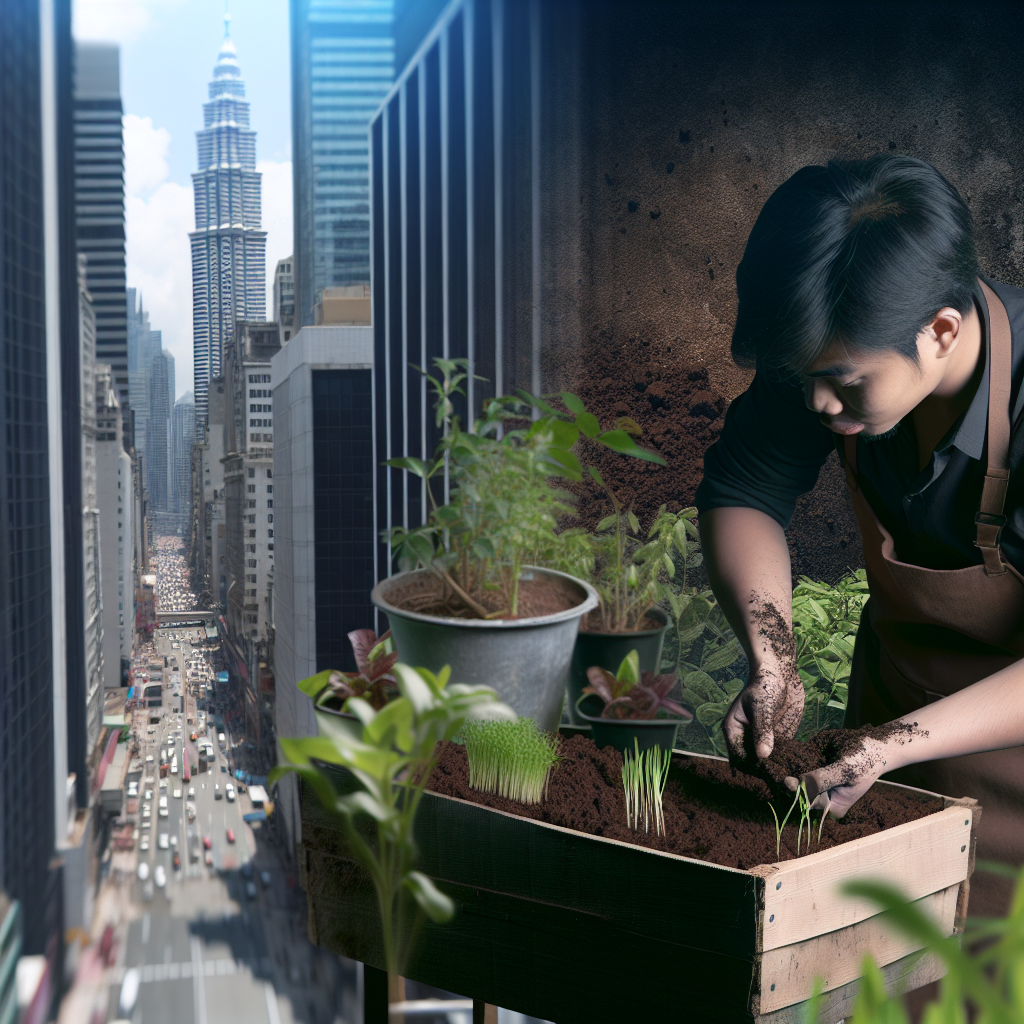
Fertilization Strategies for Container Plants
Understanding Container Soil Needs
Container soil differs from garden soil in many ways.
It requires specific nutrients to thrive.
Often, soil in containers drains quickly, leaching nutrients.
Therefore, regular fertilization becomes essential.
Types of Fertilizers
Different fertilizers offer unique benefits for container gardens.
Liquid fertilizers provide immediate nutrients.
Granular fertilizers offer slow-release options.
Organic fertilizers enrich the soil while promoting healthy growth.
Chemical fertilizers can deliver nutrients quickly but may harm beneficial organisms.
Benefits of Organic Fertilizers
Organic fertilizers improve soil structure over time.
They also promote microbial activity within the soil.
These fertilizers are typically safer for plants and the environment.
Showcase Your Farming Business
Publish your professional farming services profile on our blog for a one-time fee of $200 and reach a dedicated audience of farmers and agribusiness owners.
Publish Your ProfileUsing Chemical Fertilizers Wisely
Chemical fertilizers can effectively boost plant growth.
However, they must be used with caution.
Over-fertilization can lead to nutrient burn on plants.
Always follow the manufacturer’s instructions for application.
Application Timing
Timing your fertilizer application impacts plant health.
Fertilize at the beginning of the growing season for best results.
Also, consider a mid-season boost for heavy feeders.
Monitor plant growth to adjust fertilization as needed.
Frequency of Fertilization
The frequency of fertilization depends on several factors.
Consider the type of plants you are growing.
Additionally, the size of the container affects nutrient needs.
In general, fertilize container plants every 4 to 6 weeks.
Signs of Nutrient Deficiency
Watch for signs indicating nutrient deficiency in your plants.
Yellowing leaves often signal nitrogen deficiency.
Pale or stunted growth may indicate a lack of other essential nutrients.
Address deficiencies promptly to prevent long-term damage.
Watering and Fertilizing
Your watering routine affects how fertilizers work.
Watering before fertilizing helps reduce fertilizer burn.
Additionally, ensure proper drainage in your containers.
Too much water can wash away nutrients significantly.
Monitoring and Adjusting
Regularly monitor your plants and adjust fertilization as needed.
Use a soil test kit to determine nutrient levels.
This helps you make informed decisions about fertilization.
Healthy plant growth is the ultimate goal.
Seasonal Planting Tips for Continuous Harvest
Understanding Seasonal Planting
Seasonal planting allows urban farmers to maximize their harvest.
Knowing when to plant each crop is essential for success.
Timing your planting ensures that you have fresh produce year-round.
Spring Planting Strategies
Begin your spring planting as the last frost date approaches.
Consider crops like lettuce, spinach, and peas for early yields.
These plants thrive in cooler temperatures and grow quickly.
Utilize containers to create a flexible gardening space.
Summer Planting Techniques
Summer is the prime season for heat-loving crops.
Popular choices include tomatoes, peppers, and eggplants.
Ensure containers have adequate drainage to prevent waterlogging.
Moreover, practice regular watering during hot spells to keep plants healthy.
Fall Planting Considerations
As summer wanes, consider planting fall crops such as kale and carrots.
These crops can endure cooler temperatures and frosty nights.
Plant them in mid to late summer for a successful fall harvest.
Using frost covers can extend your growing season into late autumn.
Winter Planting Possibilities
Winter might seem dormant, but container gardening can continue.
Showcase Your Farming Business
Publish your professional farming services profile on our blog for a one-time fee of $200 and reach a dedicated audience of farmers and agribusiness owners.
Publish Your ProfileConsider planting herbs like parsley and chives indoors.
Indoor gardening allows for fresh flavors even in the cold months.
Utilizing grow lights can enhance growth during shorter days.
Continuous Harvest Planning
For a continuous harvest, practice staggered planting throughout the year.
Succession planting helps ensure you harvest crops at different times.
Track what you plant and when to optimize your garden layout.
Additionally, keep an eye on your local climate to adjust planting schedules.
Creative Container Designs to Enhance Aesthetics
Choosing the Right Containers
Select containers that align with your urban space’s aesthetic.
Consider materials like ceramic, wood, or metal for uniqueness.
Ensure the container size suits the plants you choose.
Different shapes can create visual interest, so explore options.
Color Coordination
Incorporate a color scheme that complements your home’s exterior.
Bold colors can energize and draw attention to your garden.
Alternatively, earthy tones blend seamlessly with natural surroundings.
Utilize contrasting colors for a dynamic visual appeal.
Layering Plants for Depth
Layer plants of varying heights to add depth to your containers.
Position taller plants in the center or at the back.
Use trailing plants around the edges for a soft effect.
This technique creates a well-balanced, full look.
Incorporating Decorative Elements
Add decorative stones or pebbles to enhance container aesthetics.
Consider statues or garden ornaments for added character.
Seasonal decorations can be changed throughout the year.
Make sure to maintain balance to avoid cluttering the design.
Utilizing Vertical Space
Maximize limited space with vertical planters or wall-mounted containers.
Hanging baskets introduce visual interest at various heights.
Use tiered shelves to showcase multiple planters effectively.
This approach ensures that every inch of space is utilized creatively.
Incorporation of Lighting
Use string lights or solar-powered lanterns for nighttime appeal.
Lighting can highlight your plants and create a cozy atmosphere.
Consider lanterns that complement the style of your containers.
Effective lighting enhances the overall visual impact significantly.

